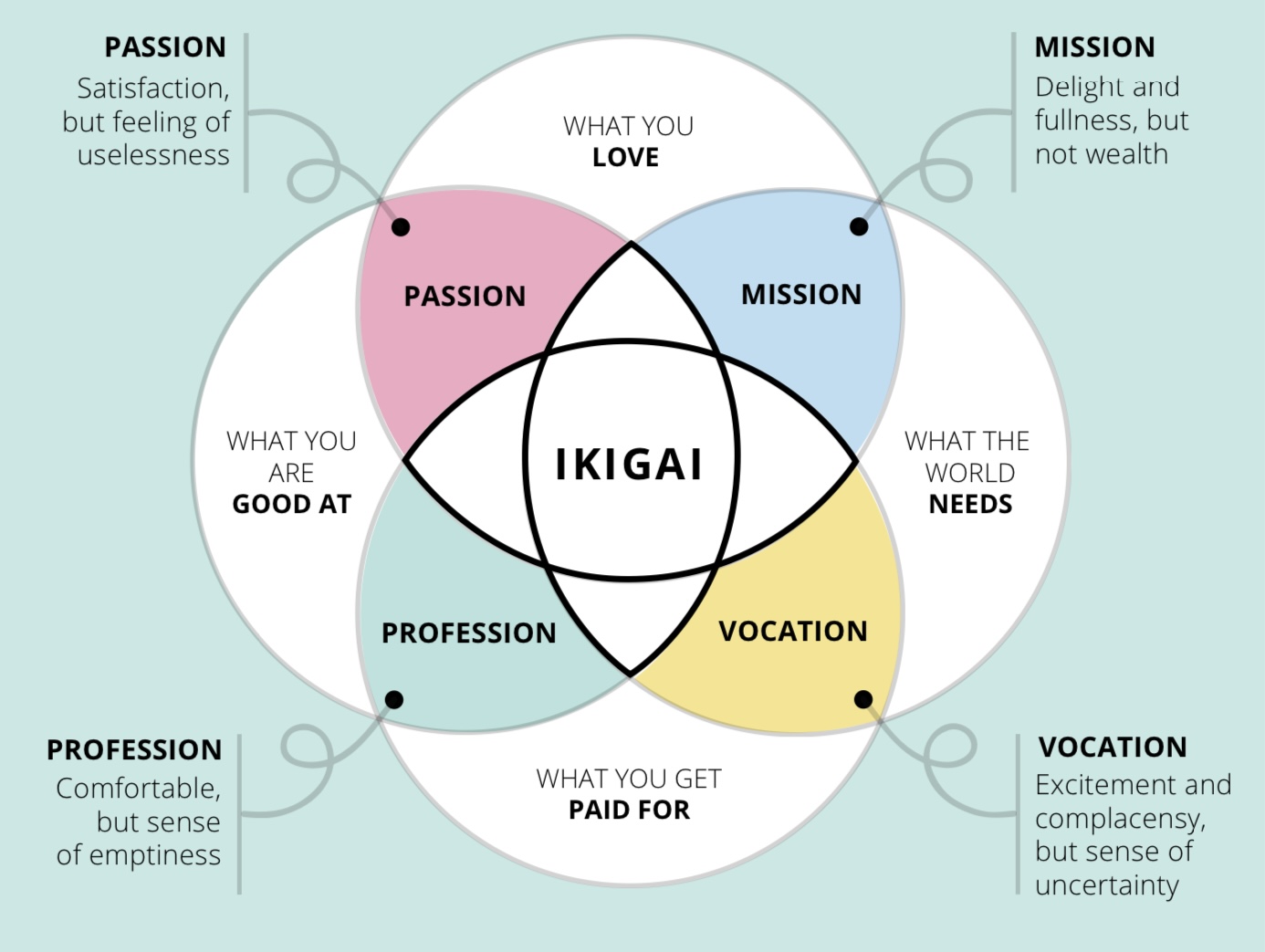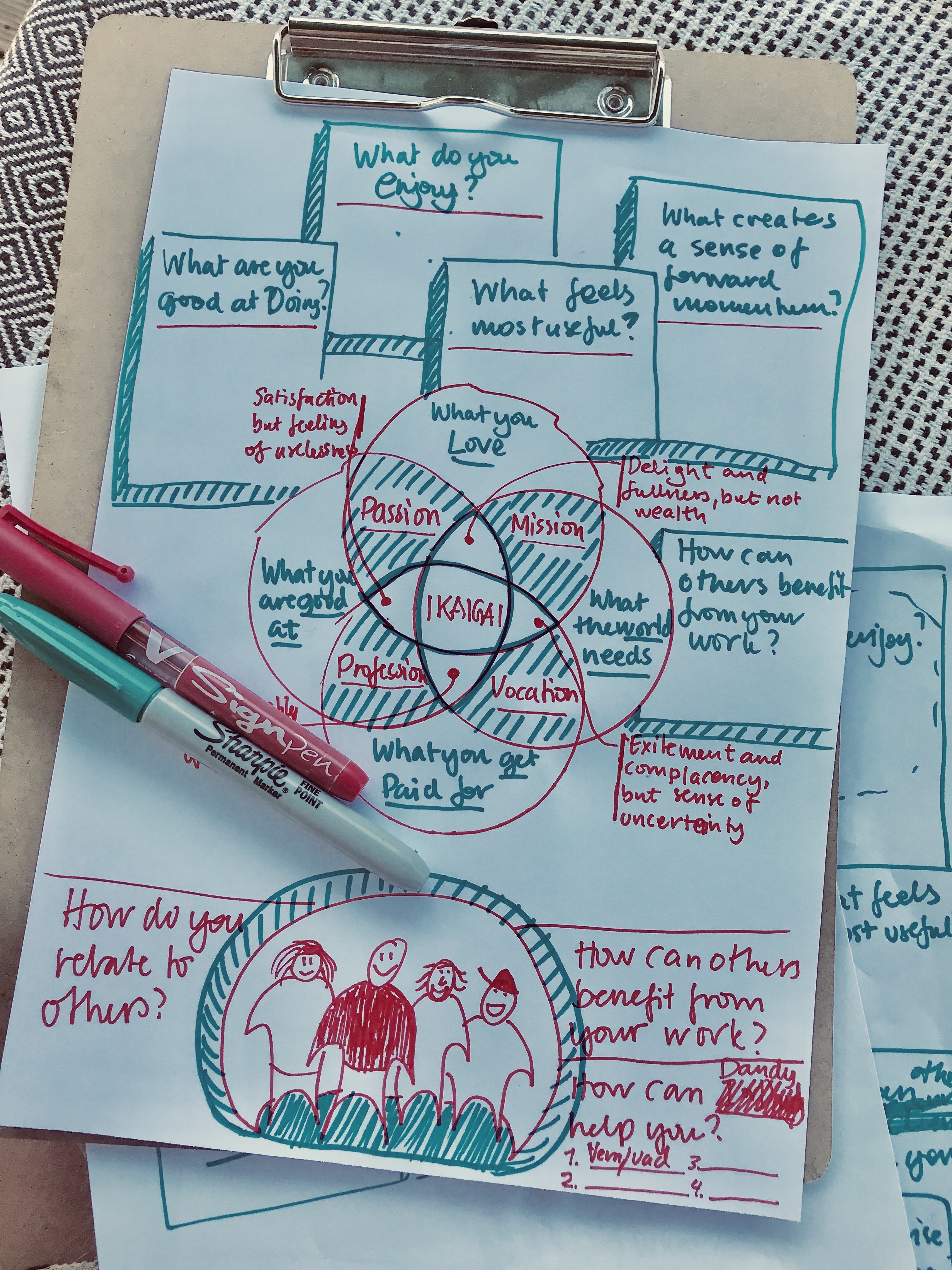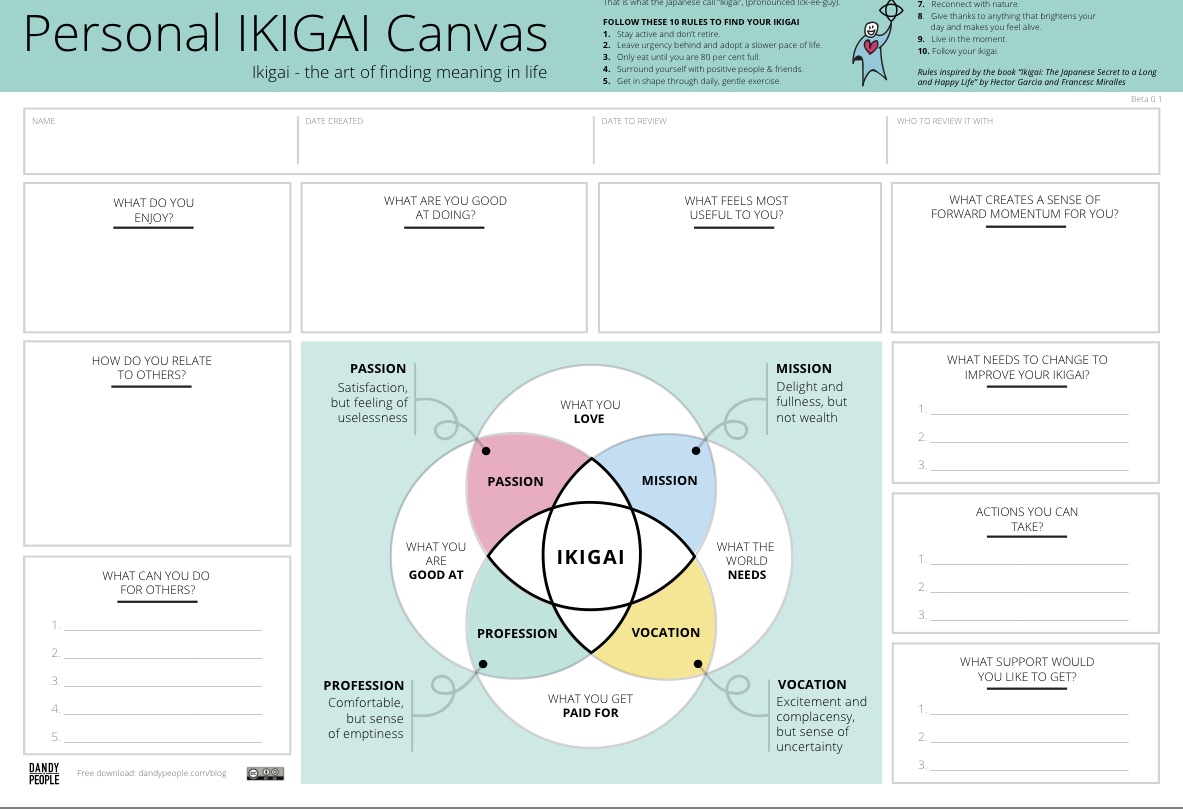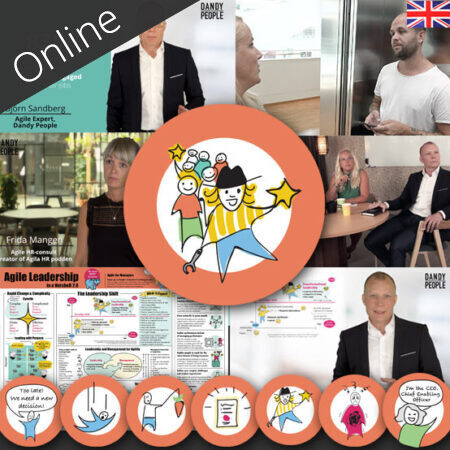As leaders in the fast paced complex world of today you need to become a facilitators of growth. The ikigai canvas is such a tool that can be used to enable growth of people and in teams. It helps us see what makes us feel happy and what makes us grow as individuals, and if it is being done as a team activity, it helps us relate and understand others. When I created it I had in mind that it could be used in our professional life to coach people in their personal growth at work – and specifically to make them feel happy. Perhaps you can use it in your Agile team to facilitate this process, instead of having your yearly performance review 🙂
Download the free IKIGAI canvas here in high resolution (PDF) >
When work has meaning
I love when I get a new issue of the Harvard Business Review magazine, always inspiring and interesting, there is always lots of articles that grows my mind and gives me new perspectives. In the beginning of the summer, the issue focused on “When work has meaning”. One of the articles there made my brain think of the ikigai diagram that has been interesting me now the past 12 months or something. This connection in my brain made me starting to sketch on a canvas for personal development – perhaps something I could use for my self, as well as for us to use at Dandy People?
What is ikigai?

Ikigai is Japanese, and is pronounced Ick-ee-guy. If you ask your self what your reason to jump out of bed in the morning is, that is what the Japanese call “Ikigai”. It means to find a meaning in life that makes us feel happy and enjoy all parts of life.
Follow these 10 rules to find your ikigai
1. Stay active and don’t retire.
2. Leave urgency behind and adopt a slower pace of life.
3. Only eat until you are 80 per cent full.
4. Surround yourself with positive people & friends.
5. Get in shape through daily, gentle exercise.
6. Smile and acknowledge people around you.
7. Reconnect with nature.
8. Give thanks to anything that brightens your day and makes you feel alive.
9. Live in the moment.
10. Follow your ikigai.
Rules inspired by the best selling book “Ikigai: The Japanese Secret to a Long and Happy Life” by Hector Garcia and Francesc Miralles.
“Happiness is to sit and think in the shadow one hour a day”
When I had this moment of creativity, I could feel the joy of being able to connect the dots and create something that might could bring value to me and others. I could feel happiness – and I could feel that I was in my ikigai. This is a feeling that I’ve had a lot of times since we started Dandy People a year ago, and it makes me happy in the moment as well as sure that we are doing the right thing – no matter what problems that might come along the way, we will be able to solve them by helping each other and keeping an open mind and sharing our learnings from failures as well as celebrating our winnings together. 
I realise what makes me feel this way is often to be able to reflect and think, to “connect the dots”. Many times this has to do with when I can help other people view things in new ways and help them see how they can change their behaviour to reach their goals. And the most fulfilling moments are a lot of times when I get to work with others who have the same drive as me, when we can find new ways of thinking together and connect dots in new ways building on each others experiences and strengths.
Free Download of the personal IKIGAI Canvas
Download it here in high resolution PDF >
I hope the canvas can help you and your team find happiness and meaning at work 🙂
Please let me know if you have any learnings when using this you would like to share with me or others.



